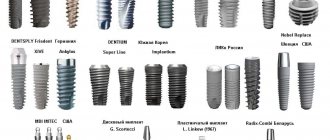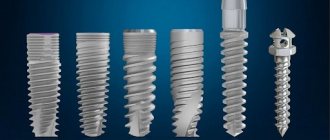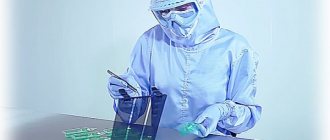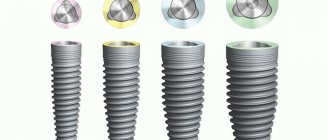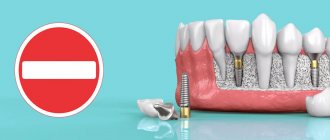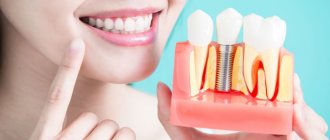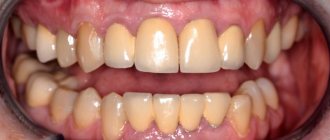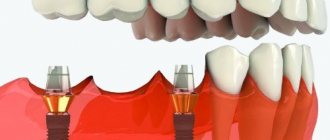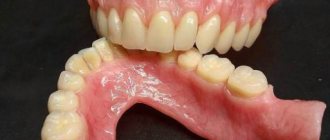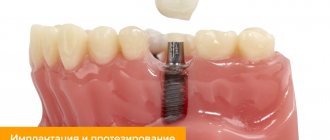Over the past 10 years, the company has carried out revolutionary changes in the models produced by implants in the areas of coating, structure and shape. Due to the high quality and the ability to solve the problem of missing teeth in an extremely short time, the number of implantologists using the immediate loading protocol in their practice has significantly increased.
Oneway Biomed is produced by a progressive company that specializes in developing models for both one-stage and two-stage implantation, but with an emphasis on immediate loading. Large amounts of money are invested in research - the company’s specialists have almost thoroughly studied the issues of pathologies and bone tissue regeneration, which has allowed us to bring dental implantation in patients with obvious violations of the quality and volume of the jaw bone to a new, more effective and safe level.
| Official partnership |
| Dentistry "Smile-at-Once" is an official partner of Oneway Biomed. The clinic’s specialists have extensive experience working with these implant systems and have support from the manufacturer, which allows us to guarantee patients high treatment results. |
Ihde Dental AG is a manufacturer of high quality implants
was founded in 1954 as a company selling medical instruments. Only for the last twelve years has he been developing implants, during which time several types of implantation systems have been developed.
The products are patented and certified according to international standards. With the support of the company, educational forums, trainings, and courses aimed at improving the qualifications of dentists are regularly held.
Ihde Dental is represented by a developed network of representative offices in more than 45 countries. In Russia, the products are sold by Oneway Biomed.
General information
Oneway Biomed is a brand of implants manufactured by Ihde Dental AG (Switzerland) since 1989. The company is headed by Stefan Alfred Eid, MD, professor and maxillofacial surgeon, who was one of the first developers of basal implantation. The history of the company began with the development of disc implants, the implantation of which was carried out in conditions of acute atrophic processes of bone tissue. However, due to their rather traumatic environment, the company's development began in a slightly different direction: in the field of developing implants that would resolve even the most difficult clinical situations associated with a lack of bone tissue in a less traumatic way with immediate loading of the prosthesis.
Manufacturing technologies
The composition of the implants is pure titanium Grade 5. They are produced using technologies developed by the company based on its own research. Subject to:
- sandblasting;
- acid etching at high temperatures;
- electrochemical surface treatment (leveling, application of an osmo-active substance).
High-tech production methods provide less resistance when screwing in and high sterility.
Features of manufactured Oneway Biomed implants
- Restoration of jaw functions within 3 days, strong fixation of the rod in a short time after prosthetics.
- Immediate load on the prosthesis activates bone remodeling processes, and faster osseointegration occurs (unification, bonding of the titanium root with the bone).
- Average level of system stability immediately after installation.
- The operation does not require general anesthesia; local anesthesia is sufficient.
- Treatment is possible without bone augmentation.
System catalog
Classic two-piece GIH implant
There are two series:
- " Direct ". Indicated for use with small holes. Not suitable for installation in high pressure areas (molars) or diagonal loads.
- «6+2" Designed for installation in the molar area. Wider and much shorter than the first line.
Features of GIH (Hexacone) rods:
- screw type, GIH Direct has compression properties;
- 12-sided connection of the abutment (the part on which the crown is attached) to the base;
- compatibility with popular foreign implantation systems, because many types of implants are analogues of well-known manufacturers;
- a full range of production processing: sandblasting, application of an osmo-active substance, acid etching.
Implants for narrow bone GXI
They differ in the following characteristics:
- screw type;
- a wide variety of sizes: diameter of the intraosseous part - from 3 to 4.5 mm, length - 8-15 mm;
- two precise cylindrical guides for adjusting the position of the structure;
- 6-sided connection of the abutment with the base;
- made of pure titanium.
One-piece compression implants GCS (KOS)
There are three main modifications:
- Main . The abutment is straight and immovable.
- " A ". The abutment is inclined to the base and is motionless.
- " B ". The connection between the abutment and the base is flexible, which allows the dentist to independently tilt the implant at the desired angle.
Features of GCS (KOS):
- screw type with compression properties;
- monolithic design;
- 8-sided abutment head.
Cortical GBC implants for basal implantation
Two modifications are available:
- Standard.
- With reinforced abutment.
Features of GBC (BCS) implants:
- screw type;
- fastening occurs in the basal and cortical parts of the bone;
- the surface of the rod is polished and self-tapping;
- can be installed together with dental bridge structures;
- There is protection against rotation during manipulation.
Lateral disc-based implants (TOI, BOI)
The main element of fastening lateral structures is plates located on a common base. They are practically not used due to the high level of trauma during installation and low survival rate.
- One-piece BOI.
- Two-part TOI.
Differ:
- number of plate elements;
- size, shape of the plates;
- distance between the plates.
Features of Lateral implants:
- plate type, T-shape;
- The main method of fixation is mechanical.
They are used for bone atrophy due to the large attachment area.
Classification of implants
By type of design
- Cylindrical. It resembles a cylinder with a porous textured surface. They are installed in a pre-prepared round hole in the bone tissue.
- Screw. They are similar to ordinary construction screws. They have a conical shape with a thread attached to it. Often they do not require hole preparation, but are screwed into the bone.
- Lamellar. Installed when installation of traditional options is not possible. Made in the form of a flat plate with holes for bone growth, to which the abutment is fixed. Slightly less stable than analogues.
- Basal. The structures are designed for one-stage basal installation. They can be implanted not only in the jawbone, but also in the zygomatic or electrical lines of the skull. They are distinguished by a special coating.
- Root-shaped. This is a general term that combines cylindrical and screw implants, since they visually resemble a tooth root and have an anatomical shape.
- Subperiosteal. Saddle-shaped structures are installed between the periosteum and the lower jaw.
- Mini implants. Similar to regular root implants, but much smaller in size. The difference is that they do not require long-term bone building if the bone is not of sufficient height.
At the installation location
- Lower jaw. Working with the lower jaw is much easier due to the dense bone tissue, the relative invisibility of the teeth and the convenient size of the bone. If you have lost a large number of teeth in your lower jaw, All-on-3 technology can be used (see below).
- Upper jaw. The peculiarity of working with the upper jaw is that the bone tissue here is looser, there are nasal sinuses nearby, which can easily be accidentally injured by an inexperienced doctor, and in addition, the bone tissue is often too short.
- Front teeth. In this case, a two-stage installation (see below) is usually used as it gives the most aesthetically pleasing result.
- Cheekbones. Special zygomatic implants are used that extend beyond the upper jaw.
According to the material of manufacture
- Metal. Metals used to make implants (with the exception of zirconium and titanium individually) include cobalt, chromium alloys, and stainless steel. They are good in their properties, but somewhat more often cause rejection.
- Zirconium. Typically used for titanium intolerance. Zirconium, although slightly inferior in properties, is even more hypoallergenic.
- Titanium. The most popular material. Titanium is durable, lightweight, easy to install, takes root well and very rarely causes allergic reactions.
- Ceramic. Ceramics are commonly used to make inexpensive dental replicas.
- Metal-ceramic. Sintered metal is a compromise option that combines the availability of ceramics and the reliability of metal.
Advantages
The main advantages of Oneway Biomed rods:
- quick installation (average time - 3 days);
- immediate load;
- the starting material is a biocompatible titanium alloy (provides natural engraftment and a low likelihood of developing allergies);
- applicable for the treatment of complex cases (lack of bone, inflammatory processes);
- the possibility of installation without the procedures required for traditional implantation (sinus lifting, bone augmentation), as a result, a reduction in the overall cost of treatment;
- a large number of available models;
- high-quality surface treatment of implants;
- long warranty - from 25 years to lifetime (specific figures depend on the clinic);
- low invasiveness - screw-type systems are installed without cutting the tissue;
- Possibility of use in case of contraindications to the installation of conventional rods (smoking, bone insufficiency);
- discomfort before and after surgery is minimized.
Lifetime Product Warranty
Oneway Biomed implants are provided with a lifetime warranty from the manufacturer, which confirms high quality and guarantees that even after decades, the installed implants will not change their shape and performance characteristics.
Disadvantages of implants
Biomed implants are designed specifically for immediate loading protocols. And their main use is a comprehensive solution to complete edentia in the presence of problems such as bone atrophy, periodontitis or periodontal disease. Therefore, the disadvantage of the brand can be considered that much less attention is paid to two-stage implantation and the assortment includes only one implant model for delayed loading, the use of which is not possible in all clinical cases.
Quality and certification
Ihde Dental products are certified according to the international standard ISO 13485 and registered in state registers of medical devices. Meets the quality requirements of the EEC (European Economic Community).
After production, the products undergo quality control and are then delivered to clinics. According to Roszdravnadzor, they are classified as products with a potential risk of 2b (increased degree of risk). Registered implants from other companies are also class 2b or 3 (high risk).
Disadvantages of products
The disadvantages mainly relate to basal systems, which are often perceived by dentists with prejudice. Causes:
- High demands on the skills of doctors . Installation of basal implants requires good qualifications and strict adherence to the protocol.
- High risks . Patients are not insured against accidental errors or the consequences of negligence. In case of complications or incorrect installation, removal of the implant is possible only with part of the bone. Because deep, dense areas are involved, it can cause significant damage to the jaw structure.
- Some dentists claim that any Ihde Dental implants have poor osseointegration and are held in place mainly by friction. Immediate loading will gradually loosen the installed structure, leading to its rejection. In practice, basal implants often cause poor gum condition, even to the point of atrophy.
Main disadvantages:
- high installation complexity;
- frequent loss of oral aesthetics, discomfort;
- highly traumatic operation: causing significant damage to the gums, the need for surgical sutures;
- severe loss of bone over a large area due to rejection of the structure.
A little history of Biomed
Ihde Dental, which produces Oneway Biomed implant systems, was founded in Berlin back in 1954. After 10 years of its existence, the manufacturer moved to Bavaria, and by the end of the 1980s it opened a second representative office in Switzerland. Today on the Internet you can find information that the company has been producing implants for about 50 years, but this is not an entirely true statement. At first, Ihde Dental specialized exclusively in distribution activities, that is, it was engaged in the purchase and resale of materials and dental instruments. A little later, implant surgeon Stefan Ide came to the post of head of the company - it was he who launched the production of the first basal implants. True, then they had a completely different appearance and were disk-shaped, but now they have a completely classic shape, but at the same time they also use the basal parts of the jaw bone for fixation, and sometimes they also use the denser zygomatic parts.
Contraindications
Reasons to completely refuse or postpone the installation of Biomed implants:
- risk of complete lack of load or overload of implants (habit of chewing on one side, semi-paralysis);
- asymmetry of the chewing surfaces of the right and left sides;
- blood clotting disorder;
- deviations in the functioning of the nervous system;
- disruption of bone regeneration processes;
- pregnancy, breastfeeding;
- disturbances in the functioning of the immune system;
- chronic diseases:
- tuberculosis;
- insulin dependent diabetes.
Issues that pose less of a threat but require attention:
- chemotherapy;
- acute rheumatism;
- neuroses, mental disorders;
- inflammation of the gums;
- contraindications to anesthesia;
- poor oral hygiene.
- Complete restoration of the dentition in just 4 days!
more detailsRoott Pterygoid Implants Sinus lift is no longer needed!
more details
Once and for life! Express implantation in 4 days with a permanent ReSmile prosthesis
more details
All-on-4, All-on-6, ReSmile, Zygomatic implantation We use all modern methods of dentition restoration
more details
The presence of contraindications is not always a reason to exclude the installation of implants. The severity of the pathology plays an important role.
Scope of application - indications for use
- implantation using a two-stage technique (rare),
- the use of a one-stage technique providing immediate loading to solve the problem of complete or almost complete adentia, in case of inflammation of periodontal tissue. In particular, basal, cortical and zygomatic implantation,
- restoration of 1 tooth or a small number of teeth with immediate attachment of a single or bridge prosthesis,
- a one-step technique, when the implant is placed in the socket of a tooth that has just been removed,
- installation of the implant into the bone both in a vertical position and at an angle.
Installation process and implantation methods
Implantation is performed step by step:
- Calculation and modeling . The installation location is determined, the type of rod is selected, and its diameter and height are calculated. For the anterior sections, long, thin models are used, in the distal part - wider and shorter ones. If there are several implants, the doctor considers combining them with a prosthesis.
- Sanitation of the oral cavity, disinfection of the installation site . Necessary to prevent infection.
- Anesthesia (local or general).
- Preparation of the implantation bed . Facilitates insertion and ensures precise positioning of each titanium root. Several techniques are used depending on the type of rod being installed: Screw type. Using the drilling method, the surgeon makes a channel for the future implant. A hole in the second cortical plate is created using tapping instruments (eg, an elevator), allowing simultaneous assessment of bone quality based on the sound produced.
- Lamellar. A flap of fabric is folded back, sufficient for a good view of the work area. Muscles and other soft tissues are shifted to the side during the operation. Several channels are drilled, which are then combined into a single cavity.
- Screw type. Titanium roots are screwed into the prepared hole using a torque wrench with a fixed force. If the model is two-piece, an abutment is installed on the inserted implant.
- In case of unrelated implants: installation of a suitable crown on the abutment.
Implantation stages
The first step in the dental implant process is developing a customized treatment plan. The plan is tailored to your specific needs and prepared by a team of specially trained professionals who are experts in surgery and prosthetics. This team approach ensures the highest possible quality of care.
The implant, which is a small titanium rod, is then placed into the bone bed of the missing tooth. As it heals, the lower jaw fuses with the titanium rod, securely fixing it in the upper jaw. The healing process may take 6 to 12 weeks.
Once the implant is attached to the jawbone, a small connecting post called an abutment is attached to it to securely hold the new tooth. To create one or more new teeth, your dentist takes impressions of your teeth and creates a model of your bite (which records all your teeth, their type, and their position). The new tooth or teeth are based on this model. A replacement tooth, called a crown, is then attached to the abutment.
Instead of one or more individual crowns, some patients may have attachments attached to the implant to hold and support the denture.
The orthodontist then selects a color for the new teeth that is closest to your natural teeth. Because the implant is anchored into the jawbone, dentures look, feel, and function just like your natural teeth.
Caring for implanted structures
To maintain the good condition of the implantation system, follow simple rules for 10-20 days after surgery:
- avoid hard or sour foods;
- avoid stress and general overload of the body;
- maintain temperature balance: do not eat too hot or too cold food, avoid visiting the bathhouse or sauna.
Regardless of the time elapsed after surgery, maintain your immune system and maintain oral hygiene:
- brush your teeth twice a day;
- rinse your teeth after eating (with water or mouthwash);
- rinse the installed prosthesis with an irrigator.
It is not recommended to clean the area near the implants using standard dental floss. To avoid damage to oral tissue, use superfloss.
To exclude the development of complications and check the correctness of self-care for implanted dental roots, it is worth carrying out 3 scheduled check-ups with a dentist: after a month, after 3 months, after 7 months after implantation.
If there are signs of mobility of the structure, you must urgently contact the clinic to identify the causes. The mobility of the root part of the implant will indicate its rejection and the need for removal.
How long does it take to install Biomed implants?
| Service | price, rub. |
| Installation of one implant with immediate loading | from 35000 |
| Full jaw prosthetics using the “All-on-4” method | from 180000 |
| Complete prosthetics using the “All-on-6” method | from 230000 |
| Complete prosthetics supported by 8-12 implants | from 265000 |
If you compare the cost with other popular implants:
| Implant name | Turnkey installation price, rub. | |
| with metal-ceramic crown | with zirconium crown | |
| Made in Switzerland | ||
| ROOTT | from 54000 | from 60000 |
| Ihde Dental (Biomed) | from 60000 | from 80000 |
| Nobel Biocare (Nobel) | from 80000 | from 100000 |
| Straumann | from 80000 | from 100000 |
| Made in USA | ||
| 3i Biomet | from 50000 | from 67000 |
| Biohorizons | from 58000 | from 78000 |
| Bicon | from 65000 | from 80000 |
| Zimmer | from 85000 | from 100000 |
| Made in Israel | ||
| MIS (MIS) | from 45000 | from 55000 |
| AlphaBio (Alpha Bio) | from 40000 | from 55000 |
| Made in Russia | ||
| Niko (LIKO) | from 30000 | from 45000 |
Analogs to Biomed implants
- Nobel Biocare (Switzerland). The implants of this company are made of titanium, which has a high degree of biocompatibility. The outer coating of Nobel implants is TiUnit, a phosphorus-enriched titanium oxide with a high degree of crystallization. This coating provides moderate surface roughness to the implant, which increases its survival and reduces adaptation time. Nobel Biocare is one of the leaders in the production of implants and equipment for implantology; the company offers a lifetime warranty on its products.
- Straumann Roxolid (Switzerland). This company uses a special alloy in the production of its implants, which in some respects is not inferior to titanium. Straumann Roxolid dental implants are thin and short implants with a special coating that make them easier to install for patients with multiple diseases. The price of these implants is slightly lower than the Nobel flagships.
- Noris Medical (Israel). Implants from this manufacturer are focused on the zygomatic (cheekbone) implant, so they are longer than all other implants. In more than half of cases, a zygomatic implant is associated with the need to compensate for the lack of bone tissue. In this regard, Noris Medical offers doctors complete systems that include all the necessary components. The cost of basal dental implantation with upper jaw prosthetics using all-in-6 or all-in-4 protocols using Noris Medical implant systems can reach several hundred rubles (this is the cost of a zygomatic implant of the upper jaw).
- Ankylos (Germany). The popularity of this company's products is explained by their lower price category. The design features of implants from this manufacturer reduce the likelihood of loosening. In the production of implants, the patented FIRADENT Plus technology is used, thanks to which, after installation, more active bone formation is observed in the peri-implant space.
- BioHorizons (USA). The popularity of this American brand is to some extent due to the fact that the company has developed a special Laser-Lok coating for its implants. Thanks to it, the fusion of the implant with the bone tissue is accelerated. The company also patented TeethXpress, a modification of the All-on-6 for full jaw replacement. This technique has only one drawback: high-quality prostheses require absolute parallelism of the implants, which is not always possible with severe bone atrophy.
- Osstem plant (South Korea). The South Korean company is one of the five largest manufacturers of dental implants and implant systems, accounting for 80% of the South Korean market. The company's products are quite inexpensive. Since 2006, Osstem has been producing implants in its US facility and selling them under the HIOSSEN brand.
